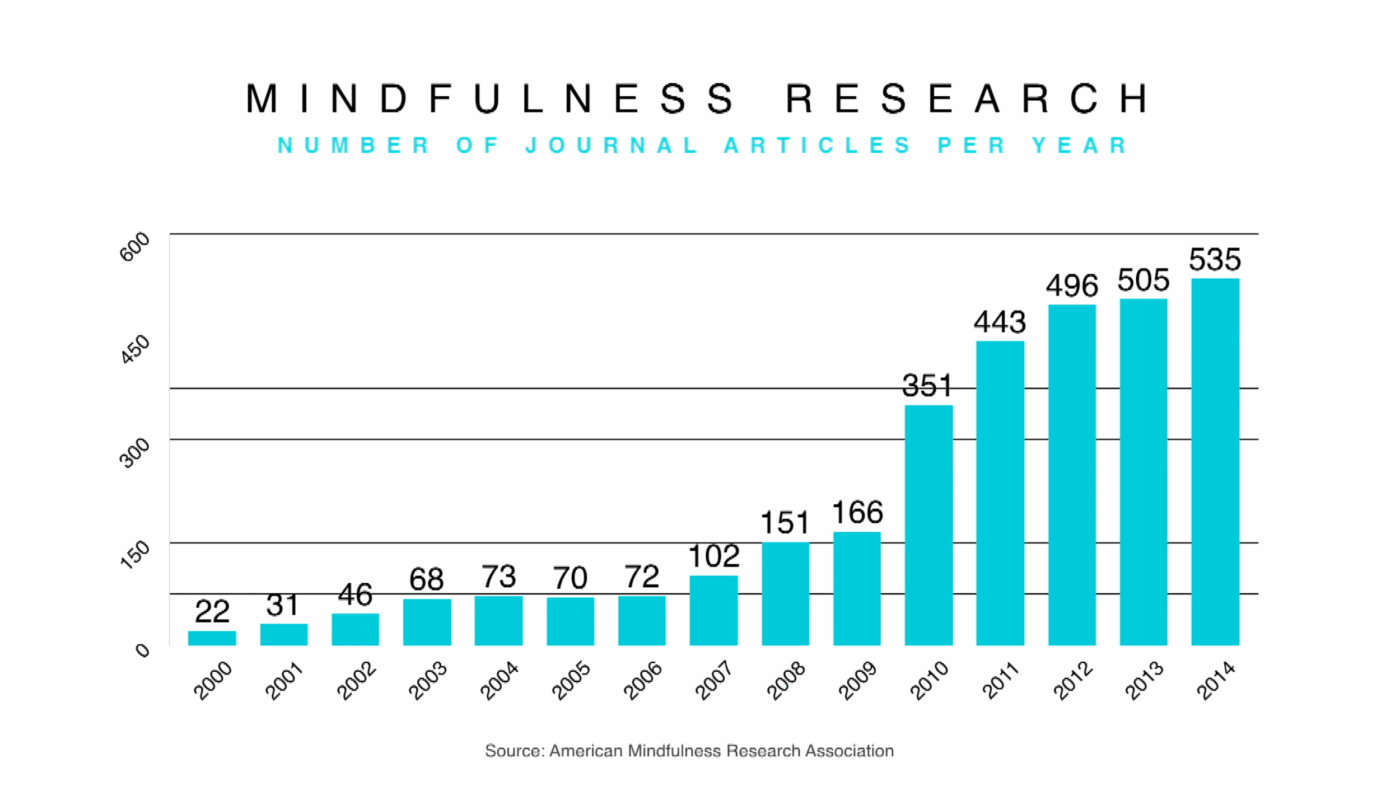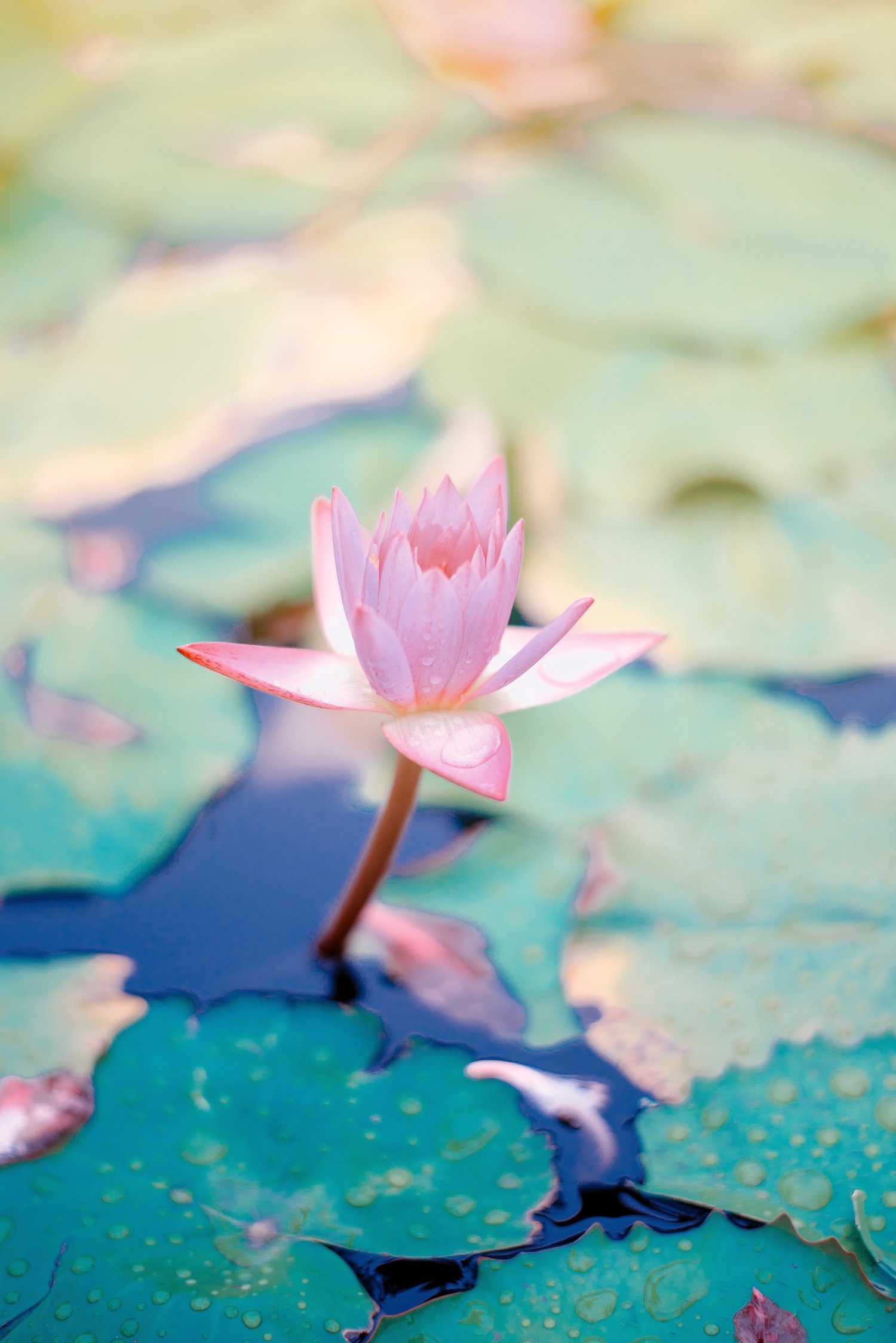The little things? The little moments? They aren’t little.
— Jon Kabat-Zinn, PhD, scientist, writer
Imagine if you could do one simple exercise that would result in less emotional distress, more positive states of mind and a better quality of life. Better yet, imagine if this exercise took no physical effort or expensive training equipment and you could do it sitting in your office, walking through the park or even lying on the couch.
There is such an exercise and millions of people around the globe are practicing it daily. It’s called mindfulness and the research—scientifically valid and replicable research— says the results are nothing less than stunning.

Mindfulness has been found to help decrease, among other things
- stress and psychological distress
- symptoms of burnout in employees
- anxiety, depression, worry and rumination
- turnover and turnover intentions at work
- blood pressure
- problems associated with alcohol
- heart rate
- aggression and problem behaviours in children
The news gets better. Mindfulness has been found to also help enhance
- mental health
- job performance
- emotion regulation and self-control
- ability to cope with bullying
- academic achievement in students
- resilience in children
- ability to focus and pay attention
- cognitive functioning
- awareness
- clarity in thinking and perception
- social and relational skills
- calmness, the ability to be internally still
- immune function
- the feelings of being connected
I’m sure most readers have heard of mindfulness but anecdotal evidence shows many people are a little unsure of what it is or how it’s done even though it’s been around for centuries. (Merriam-Webster reminds us that the term was first used around the year 1530. That was right around the time that Jacques Cartier was mapping the St. Lawrence River.)
What is mindfulness?
Although it’s a meditative practice, you don’t have to sit in a meditative position, wear love beads or burn incense to do it. Mindfulness is a simple notion that is routed in the concept of “being aware.” More than that, mindfulness is about being aware of what is happening right now. People who are mindful are present and open to all the feelings and thoughts and even physical sensations associated with what is going on around them at this moment. They don’t judge those feelings, thoughts or sensations. They just have them and notice them.
Think about that for a moment. Whatever you are doing—sitting on a chair, standing in line at the store, walking through the park, playing the piano, writing a report—try noticing everything about that activity. The thoughts, the feelings, the smells, the sounds—that is being mindful. That is being aware.
Isn’t there anything more to it?
Not really. You can do it to different degrees and for different lengths of time, of course, but to be mindful is to simply open your mind and senses to what is going on around you.
If you are standing in line at the supermarket, take a moment to drink in the sights, sounds and smells of your surroundings. You can hear the chatter of people around you. You can smell the produce department. You can see the mother struggling to keep her child’s hands in check. Notice. Be aware. Be mindful.
If you are driving in rush hour traffic, notice the different types of cars around you and all the different drivers. Be aware of the rhythm of the traffic, the colour of the sky, the sounds of the big trucks.
While you are eating dinner, go slowly and savour every flavour, enjoy all the aromas and be aware of the textures of every bite.
Inevitably, your mindfulness will be interrupted by random thoughts. What’s for dinner? Do I have time to stop at the pharmacy? What time is hockey practice?
That’s okay. Let the thoughts float in, acknowledge them (without judgment) and let them drift off allowing you to return to the present moment. Like everything else, practice will make it easier over time.
A more formal approach
Learning to be aware in the moment can also be practiced through more formal mindfulness exercises. Here are a few ideas.
- The raisin exercise — This can be done with just about any food but raisins seem to work well because of their texture, smell and yummy taste. Take a raisin and, pretending you’ve never seen it before, examine it closely. Notice the way it looks, feels and smells. See how the skin reacts to your touch. Eat it slowly, noticing it’s taste and texture. (Advice: Do this in public at your own risk.)
- The body scan — Begin by lying on your back or sitting comfortably in a chair with your eyes closed. Be aware of your breath, noticing the rhythm and experience of breathing in and out slowly. Then, bring your attention to each part of your body, starting at your toes, slowly working your way up your legs and so on. Once done, sit up slowly and reorient (ground) yourself by saying the names five things in the room out loud.
- Mindful seeing — Find a window with a view of a variety of things. Notice everything you see. Don’t look at them and label them (“tree,” “car” or “grass”). Instead, look at their colours, patterns or textures.
- Mindful eating — Eat or drink slowly and be aware of the taste, texture, and smell of every morsel of food.
The simplest exercise I have ever come across is outlined in this nine-minute TED talk. By psychotherapist Phil Boissiere.
I will leave you with this final thought. Living in the moment—mindfulness—is good for the body, mind, and soul. If you spend your time worrying about the future or fretting about the past, right now will pass you by, never to return. Is that how you want to live your life?
Do you have experience with mindfulness? Do you have any thoughts, questions or suggestions (or even mindfulness exercises) to contribute? I’d love to hear from you.

